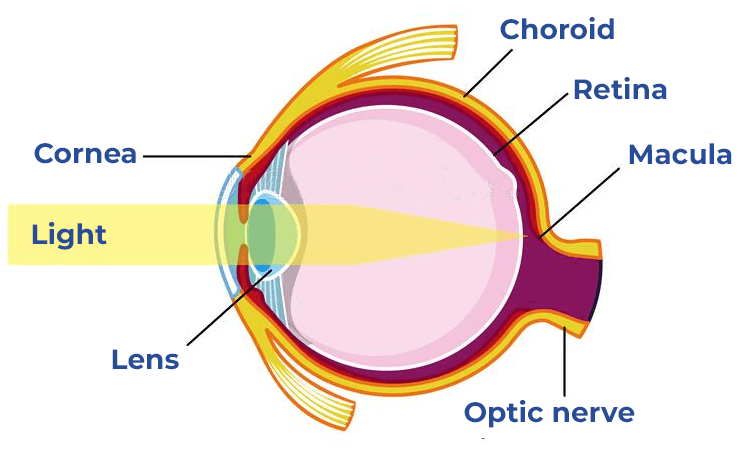

The best way to understand the functioning of an eye is to compare it to a camera. Just like a camera creates images by focusing on an object and allowing specific amounts of light to pass through its aperture to create a visual impression on the film, the eye functions in the same manner.
When light enters the eye, it passes through the cornea which transmits the light onto the pupil. The pupil, similar to the aperture in a camera, adjusts the amount of light that is transmitted onto the lens. The natural lens (similar to the camera lens) alters its shape by adjusting the eye muscles in order to precisely focus the light rays onto the retina.
The retina may be equated to a camera film. It is in the retina where the image is converted into electrical signals, which are then sent to the brain. The brain interprets these signals into what we perceive as sight.
Approximately 4.2 million Americans aged 40 and older have uncorrectable vision impairment—about 1 million are legally blind (≤ 20/200) and 3.2 million have low vision (< 20/40 to > 20/200). In total, around 12 million Americans aged 40+ have vision impairment, including those whose vision can be corrected. (Source)
701-L, Mall Road, Model Town, 144 003, (PB.)
584, Model Town, Near Hotel Presidency - 148001(PB.)
SCO-8, TMT Scheme, Saili Road -145001(PB.)
The exceptional patient care that defines THIND EYE HOSPITAL begins with our emergency room.
+91 88720 70010
+91 1882504000, 88720 70027
+91 93560 61060, 88720 70005
© 2024, Thind Eye Hospital. All Rights reserved